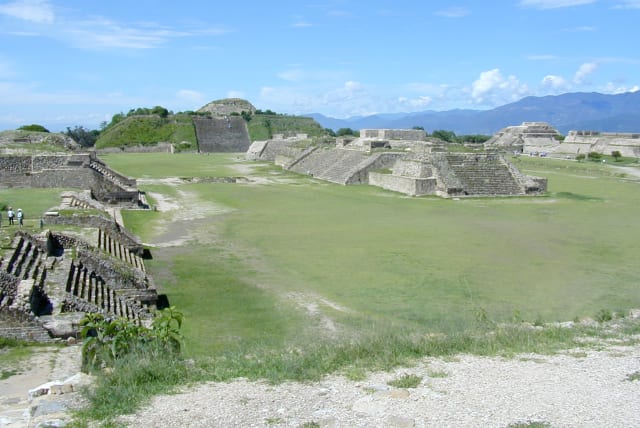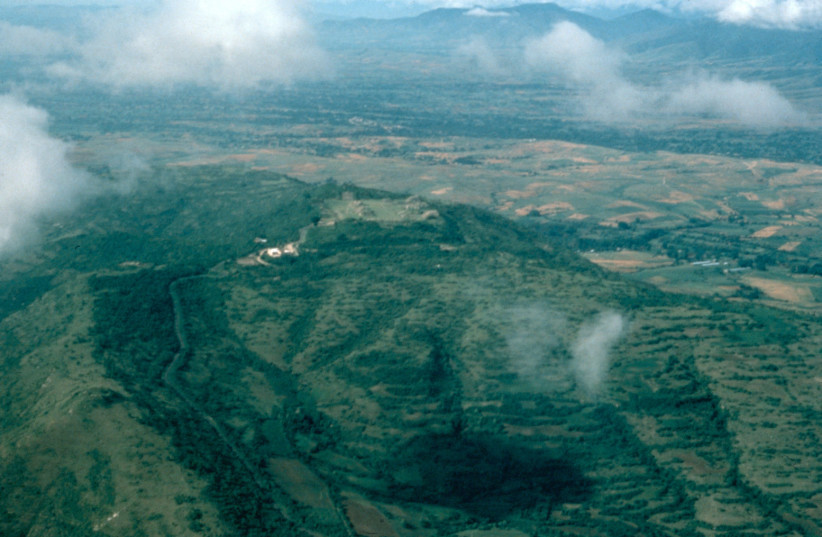Collective governing, cooperation lead to longer-lasting societies - study

A study examined urban centers in Mesoamerica between 1000 and 300 BCE in order to determine what factors contributed to their sustainability.
Archaeologists examined 24 ancient cities that existed in present-day Mexico and found that the ones that lasted the longest showed signs of collective governance, cooperation between households and investments in infrastructure.
The peer-reviewed study, which was published on Friday in the scientific journal Frontiers in Ecology and Evolution, noted that although prehispanic Mesoamerican civilizations are commonly associated with collapse - exemplified by the decline of lowland Maya cities between 700-900 CE and the Spanish invasion in the 1500s - many pre-hispanic Mesoamerican cities were relatively long-lived.
For instance, the archaeologists analyzed the 1,300-year duration of Monte Albán, the urban center of the region of Oaxaca.
In previous studies, Gary Feinman, lead study author and MacArthur Curator of Anthropology at the Field Museum in Chicago, and his team examined Mesoamerican societies more broadly than the new study, ranging across the region over thousands of years. The researchers found that societies with governments that promoted the well-being of the people lasted longer than societies with major income inequality and autocratic leaders.
"How typical was the persistence of this Valley of Oaxaca regional center, and, more importantly, can we gain further insight into Monte Alban's sustainability through comparison with other Mesoamerican central places of its era?" the archaeologists wrote.
New study narrows focus to western Mesoamerica ca. 1000-300 BCE
The new study narrows the focus to cities from similar times and places - specifically the western half of Mesoamerica between 1000 and 300 BCE.
“Our focus is on the sustainability of these places as the largest settlements in their respective regions,” the researchers said. “We find marked variance in sustainability and draw attention to factors that may be implicated in that variation.”
The researchers studied the remains of the cities' buildings, ground plans, monuments and plazas for clues.
“We looked at public architecture, we looked at the nature of the economy and what sustained the cities. We looked at the signs of rulership, whether they seem to be heavily personalized or not,” Feinman said.
Art and architecture honoring rulers suggest more autocratic civilizations while depictions of groups of leaders, sometimes wearing masks, suggest shared power structures.
Feinman and co-authors David Carballo of Boston University, Linda Nicholas of the Field Museum and Stephen Kowalewski of the University of Georgia found that of the cities they analyzed, the ones with shared forms of governance tended to last longer than autocratically-ruled cities, in some cases by a thousand years, though this was not always the case.
In order to understand why some similarly governed cities outlasted others, the archaeologists studied other aspects of their makeup such as infrastructure and household interdependence.
“We looked for evidence of path dependence, which basically means the actions or investments that people make that later end up constraining or fostering how they respond to subsequent hazards or challenges,” Feinman said.
The team found that early efforts to build dense, interconnected residential spaces and large, open plazas contributed to greater sustainability and importance of cities.
With the knowledge that residents faced hazards such as earthquakes, hurricanes, drought, heavy rains and competition with other centers and groups, the team examined the durational history of the 24 cities and what factors contributed to their sustainability.
The finding that governance had a significant impact on sustainability demonstrates that “responses to crises and disasters are to a degree political,” said study co-author Linda Nicholas, an adjunct curator at the Field Museum.
The longest-lived cities used infrastructural investments and collective governance.
“You cannot evaluate responses to catastrophes like earthquakes, or threats like climatic change, without considering governance,” Feinman said. “The past is an incredible resource to understand how to address contemporary issues.”
Jerusalem Post Store
`; document.getElementById("linkPremium").innerHTML = cont; var divWithLink = document.getElementById("premium-link"); if (divWithLink !== null && divWithLink !== 'undefined') { divWithLink.style.border = "solid 1px #cb0f3e"; divWithLink.style.textAlign = "center"; divWithLink.style.marginBottom = "15px"; divWithLink.style.marginTop = "15px"; divWithLink.style.width = "100%"; divWithLink.style.backgroundColor = "#122952"; divWithLink.style.color = "#ffffff"; divWithLink.style.lineHeight = "1.5"; } } (function (v, i) { });

